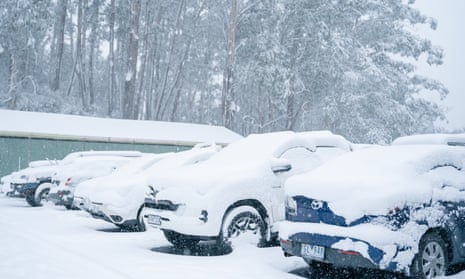Explore the History Behind Snow In Australia and Its Mountainous Areas
Explore the History Behind Snow In Australia and Its Mountainous Areas
Blog Article
Discover the Remarkable Impacts of Snow in Australia on Regional Ecological Communities
Regardless of its reputation for sun-soaked landscapes, Australia also boasts areas buried by snow-- a phenomenon that profoundly affects the country's one-of-a-kind environments. The protecting buildings of snows safeguard vegetation and animals in the middle of the coldest winters months, while the melting snow nurtures rivers and marine life. However, the genuine marvel depend on just how these wintry conditions shape the nation's biodiversity and nutrient cycles. As we untangle this elaborate connection, we discover ourselves walking on unexplored grounds in Australia's high nation.
The Unanticipated Regions of Snowfall in Australia
Although Australia is frequently linked with sandy beaches and sun-scorched landscapes, certain regions remarkably experience snowfall. The high country areas of New South Wales, Victoria, and Tasmania are particularly recognized for their winter snow. The Snowy Mountains in NSW, for example, receive bountiful seasonal snow, offering a stark contrast to the nation's regular hot, dry climate. The Victorian Alps and parts of Tasmania additionally see annual snowfalls, changing the landscape into a winter season heaven. These locations are not just abnormalities but integral components of Australia's diverse climate system. The presence of snow in these regions dramatically influences local ecosystems, ultimately influencing the nation's special biodiversity. The specific impact on Australia's distinct plants will be talked about in the following section.

Exactly How Snow Impacts Australia's Special Flora
These plants have evolved to make it through in extreme problems, with snow offering as a safety covering from freezing temperatures and harsh winds. The snow additionally adds to the moisture web content of the dirt, offering needed hydration for plant life during the dry summertime months. In essence, the snow affects the timing of flowering and seed dispersal, the development rates, and the survival of lots of plant species, showcasing the detailed interaction in between environment and plants in Australia.

The Adaptations of Australian Fauna to Snowfall
Just as Australia's flora has adapted to the wintery conditions, the regional animals too, exhibit remarkable adjustments to the snowfall. It utilizes the snow as insulation, hibernating in rock crevices beneath the snow to remain warm. The Snow Skink, a species of reptile, transforms its colour to official statement white during winter, giving camouflage against predators.
The Role of Snow in Shaping Local Ecosystems
In shaping the regional ecosystems, the function of snow in Australia is both multilayered and profound. It affects the circulation of flora and animals, mostly defining the biodiversity of sub-alpine and alpine areas. Snow supplies a vital water source, feeding rivers and reservoirs as it thaws, therefore supporting a range of water life forms. Additionally, snow works as an insulator, securing ground-dwelling microorganisms from severe cold. It plays a considerable duty in dirt formation and nutrient biking. The periodic freezing and thawing of soil caused by snowfall promotes the malfunction of rocks, improving soil fertility. Subsequently, the existence of snow shapes the greenery patterns, pet behavior, and general sustainability of Australia's one-of-a-kind ecological communities. Does It Snow In Australia.

The Future of Snowfall in Australia: Ramifications and predictions

Given the crucial duty snow plays fit regional ecological communities, the future of snowfall in Australia is attracting enhancing attention from environmentalists and scientists. Existing climate versions anticipate a substantial reduction in snowfall as a result of worldwide warming, with potentially profound influence on local communities. Less snow might cause Snow In Australia decreased water availability in alpine areas, negatively affecting wildlife habitats and plant. Additionally, it might change the timing of seasonal changes, interfering with the life cycles of numerous native varieties. The tourism industry, heavily reliant on the winter months snow season, may additionally deal with significant obstacles. For that reason, recognizing these predictions and their effects is essential to develop efficient preservation approaches, guaranteeing the preservation of Australia's one-of-a-kind biodiversity and the sustainability of its economy.
Verdict
The role of snow in Australia's ecological communities is pivotal yet commonly forgotten. Therefore, the snow in Australia is much more than a natural spectacle; it's a crucial gamer in the nation's visit here ecological story.
Regardless of its track record for sun-soaked landscapes, Australia additionally boasts areas blanketed by snow-- a phenomenon that greatly influences the country's one-of-a-kind communities. It uses the snow as insulation, hibernating in rock gaps underneath the snow to stay warm - Snow In Australia.In forming the local environments, the duty of snow in Australia is both multilayered and extensive. The presence of snow forms the vegetation patterns, pet habits, and overall sustainability of Australia's special ecosystems
Offered the crucial function snow plays in forming regional ecological communities, the future of snowfall in Australia is drawing raising interest from scientists and ecologists.
Report this page